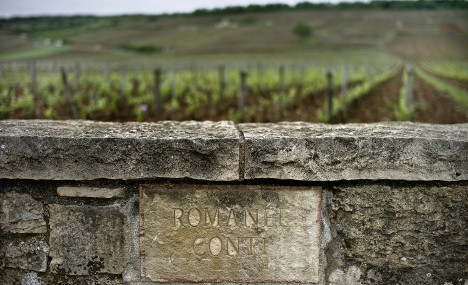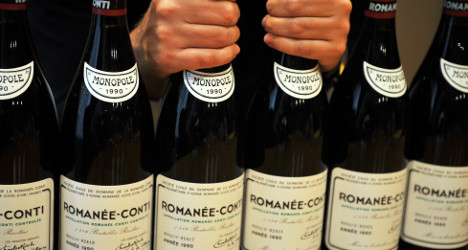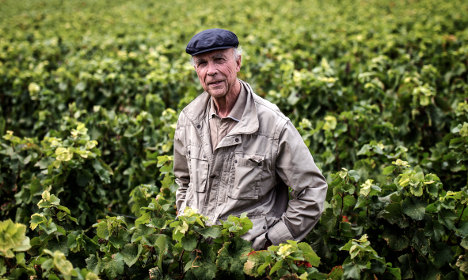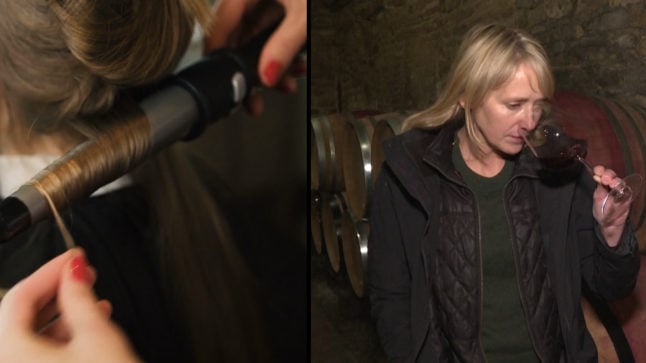De Villaine, a reserved 76-year-old, took up the mantle to get the Burgundy region's unique wine-growing tradition onto the UNESCO World Heritage list.
That effort succeeded in July and led to his being named a 2016 “man of the year” by the monthly French Wine Review.
“Burgundy is unique in the world of wine, it's a model for all of the world's wine-growing territories and for those who want to become like it, like California and New Zealand,” Villaine told AFP in an interview as rare as a bottle of his red wine.
It took eight years to get the “climats” – a term used mainly by professionals – of Burgundy's vineyards the world recognition he feels they deserve.
“The climates are precisely delimited vineyard parcels on the slopes of the Cote de Nuits and the Cote de Beaune south of the city of Dijon,” says the UNESCO website, calling them “an outstanding example of grape cultivation and wine production” developed from the Middle Ages.
Heir to one of the two families who own the Romanee-Conti domaine, Villaine found his passion for wine-growing ironically not in France, but in the United States, working as a youth at a California winery.
“I was part of a generation which thought it was difficult to make a living in the wine business,” Villaine explained.
His family's winery never made “a centime of profit” for nearly 100 years, from 1880 to 1972 when a phylloxera insect infestation ravaged the vines.
“Between the two world wars, my grandfather used the produce from his farms in Allier to finance the vineyard,” he recalled, referring to a site a few hours southwest of the now famous grape growing area.
From then on a bottle of the family's Romanee-Conti wine has regularly broken records at auctions, going for thousands of euros. At a sale in Hong Kong in 2014, a collection of 114 bottles went for $1.6 million (1.5 million euros).

Inexplicable wine
Grown on only 1.8 hectare (4.5 acres) in Vosne-Romanee, the Romanee-Conti, one of the eight “grands crus” made at the domaine, earned its prestige over the centuries:
Planted by Benedictine monks, the parcel of land was bought in 1760 by the Prince of Conti, “for a price considered rather extravagant at the time,” said Villaine, before being confiscated during the French Revolution.
Villaine's ancestors became the owners in the middle of the 19th century, with the Leroy family joining the vineyard in 1942.
“We are incapable of explaining completely why Romanee-Conti produces a red wine with a taste so different from that of its neighbours, and why this vineyard is able year after year to produce great wine,” says its winemaker.
As honorary president of the association of Burgundy winegrowers, Villaine had a reputation of working for vineyards of all sizes.
“He is equal in all his ambitions, whether for small appellations or the prestigious ones — Romanee-Conti is only one facet of his history and personality,” said Krystel Lepresle, who worked for eight years at his side as the association's director.
Since 1973 Villaine has developed another vineyard in Bouzeron, a village where he was mayor from 2001-2008, which produces a white Burgundy with Aligote grapes. It obtained a distinguished AOC designation in 1997.

Villaine says he's training his nephew to take over and has sought to expand the domaine's offerings with organic and biodynamic wine.
“At Bouzeron, we can offer some relatively spectacular improvements, while here (at Vosne-Romanee), progress is more subtle, more nuanced,” he said.
His Romanee-Conti wine was for a longtime the most expensive in the world, but that title recently went to another Burgundy wine, a Richebourg Grand Cru made by the late Henri Jayer, another legendary winemaker, according to the specialised website Wine-Searcher.
But Villaine is unfazed.
“Classification by price is meaningless,” said the veteran winemaker. “The Romanee-Conti is a Grand Cru, that's its classification.”



 Please whitelist us to continue reading.
Please whitelist us to continue reading.
Member comments